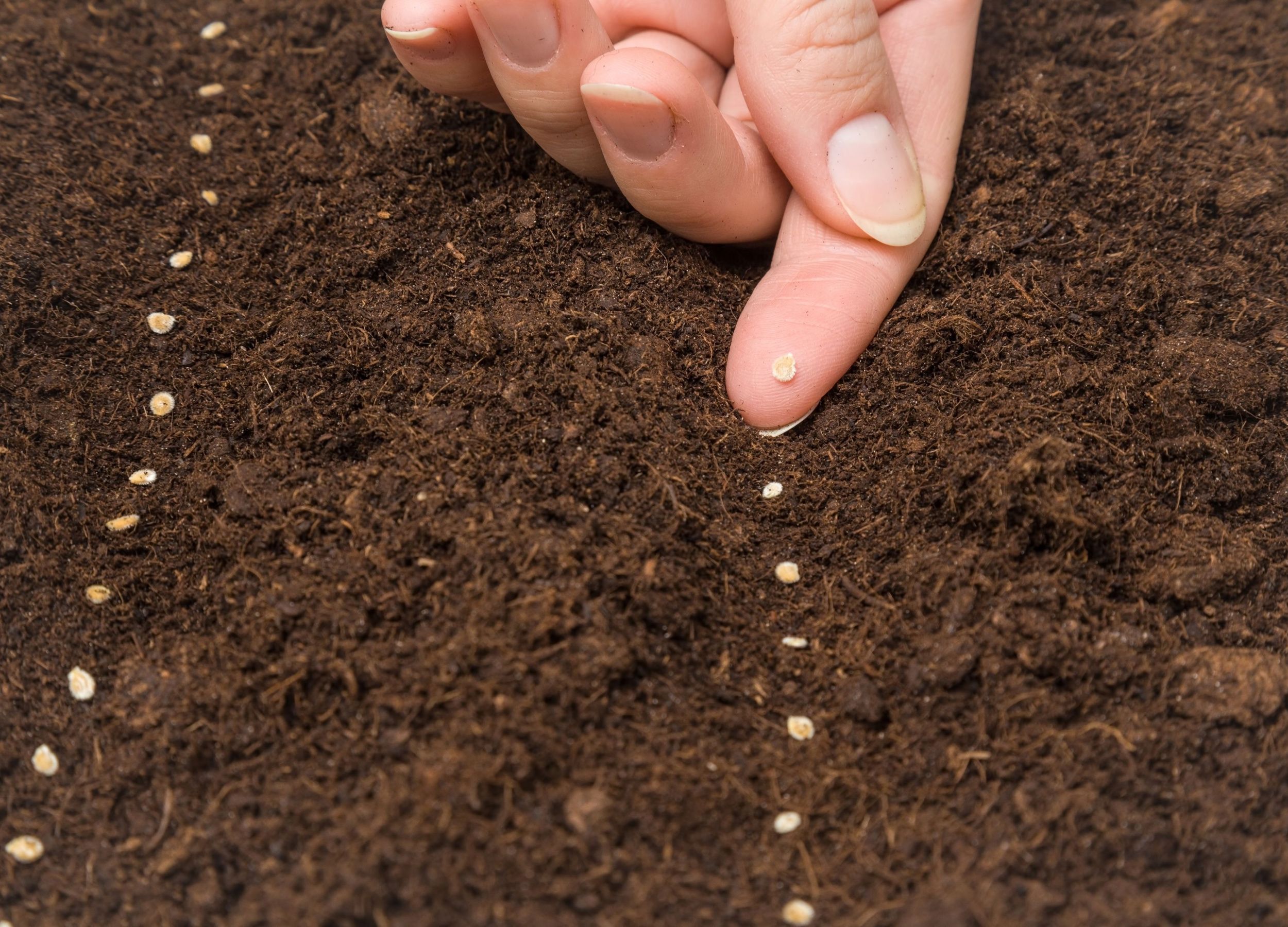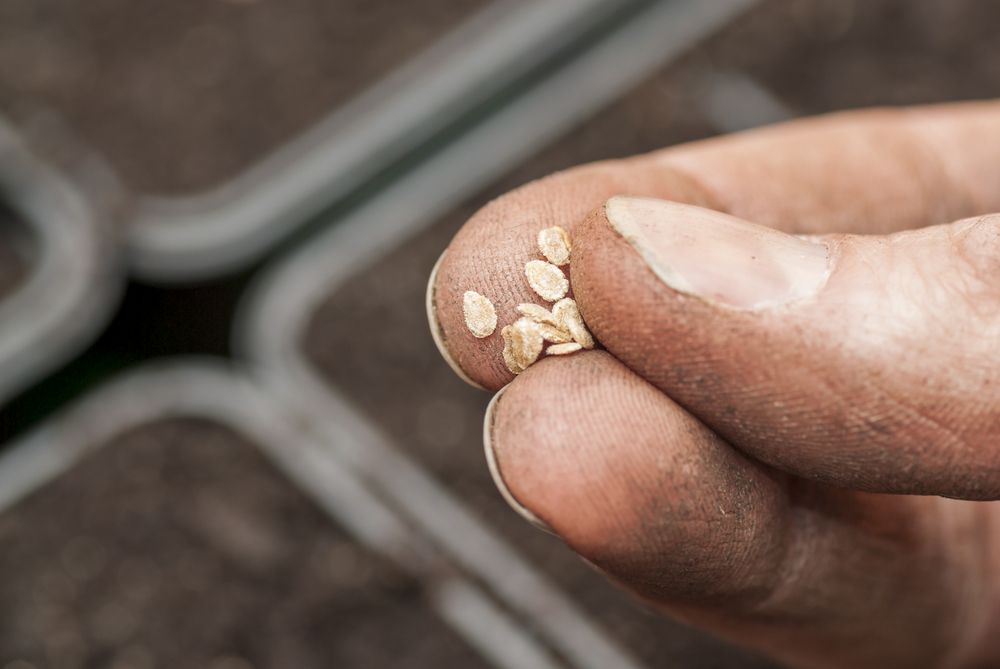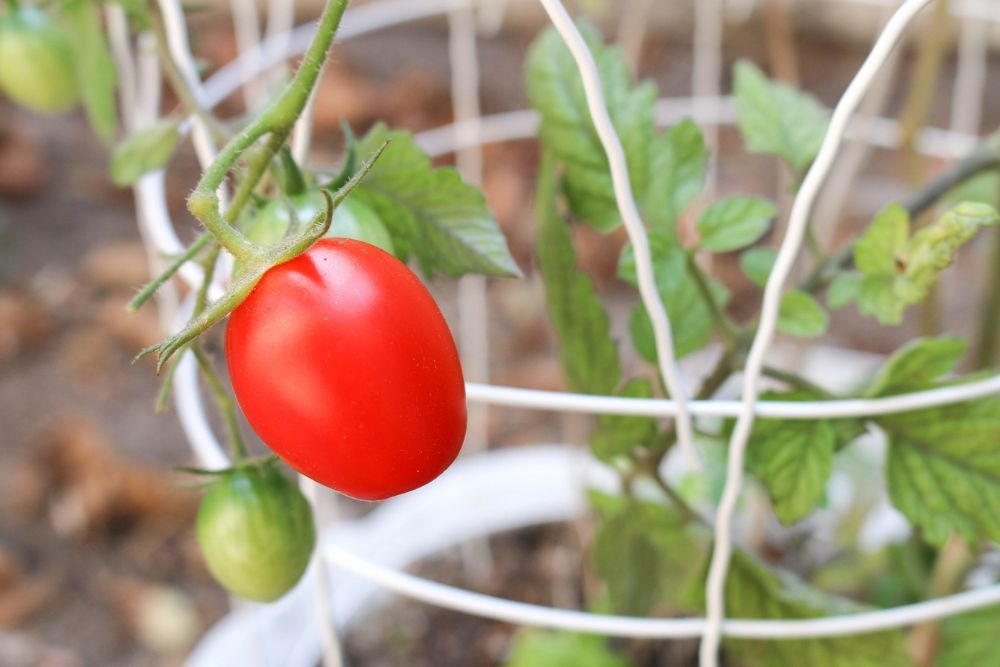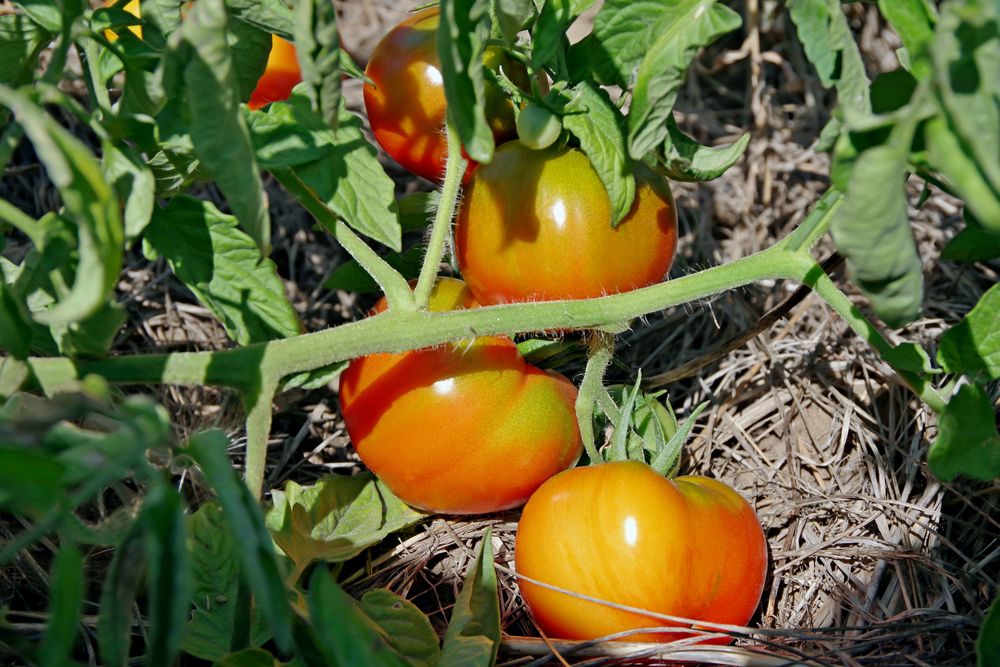Sowing the seeds of homegrown tomatoes is an incredibly rewarding experience. Not only do you get to enjoy the satisfaction of growing your own nutrient-rich produce, but there's nothing like the taste of a tomato freshly picked from your garden.
In order to get that delicious reward, timing is key when it comes to sowing tomato seeds. So, if you're looking for tips on reaping maximum yield with minimal effort this season, learn about when and how to sow tomatoes in order to cultivate a successful harvest.
Best Time to Sow Tomatoes
Image credit: Swellphotography via Shutterstock
Outdoors
When it comes to planning your garden, the best time to sow tomatoes is an important consideration. If you plant too early, and you get hit with a late frost, your seedlings will struggle to survive. If you wait until the soil is warmer, however, they'll have a better chance of thriving and producing a successful harvest.
The ideal soil temperature for tomato seeds to germinate is 70 degrees Fahrenheit. Therefore, if you want healthy plants with maximum germination within five days, opt for warm soil when you go out to sow them in your garden. Depending on where you live, this could be around mid-May or mid-June.
If you're eager, planting your tomato seeds when the soil is 55 degrees Fahrenheit will work as well, but it will take longer for the seeds to germinate.
One strong caveat: Tomatoes are ready for harvest 60 to 100 days after planting, or more depending on the variety. Therefore, it's best to sow tomatoes from seed outdoors only if you have a long growing season.
Indoors
Alternatively, sow seeds indoors about six weeks before your last spring frost date. This will give them plenty of time to get established and start producing healthy plants.
Once soil temperatures have risen to at least 55 degrees Fahrenheit (but 70 degrees Fahrenheit is ideal,) it's safe to move your tomato seedlings outdoors. Be sure to harden off your plants by setting them outdoors for a few hours each day. Provide some protection from cold weather, such as covers, to keep the seedlings warm until their roots have had time to establish themselves.
How to Care for Your Tomatoes
Image credits: Forsteyfany via Pixabay
Tomatoes are a delicious and versatile addition to a garden! With just a little bit of care, you can enjoy these juicy fruits all season long.
Location
Tomatoes need eight to 10 hours of direct sunlight each day. The best way to determine where to plant is by observing the sun's path throughout the day and choosing an area that will be in full sun most of the time. On hot summer days with intense sunshine, provide some shade (like row covers) so your tomatoes don't suffer from too much heat.
Soil
Start by having your soil tested to determine its pH level -- between 5.5 and 7 is ideal for healthy tomatoes. To make sure your soil is ready for planting, take some time to dig about 1 foot deep and mix in aged manure or compost. Give it two weeks to settle before you plant your seeds or seedlings.
Water
To ensure that your tomato plants have all the moisture they need for a successful harvest, keep the soil consistently moist throughout the growing season. About 1 inch per week is ideal.
Avoid overhead watering. This causes fungal diseases in your tomatoes, which will ruin any chance of getting a good crop. Instead, take time to drench the soil when watering by using a garden hose or sprinkler on low pressure.
Pruning
Pinching off or pruning dead foliage is essential for harvesting succulent and delicious tomatoes. Prune those yellowed leaves or dead stems and dispose of them away from the garden just as you would with other debris.
Doing this will help promote air circulation around the plant, which helps reduce fungal diseases while optimizing sun exposure and allowing more room for new growth.
Image credits: Borodkin Vladymir via Shutterstock
Mulch
Not only does mulch help retain moisture and suppress weeds, but it also provides some soil temperature regulation. Opt for 2 to 4 inches of organic mulch such as straw, hay, or bark chips. These materials break down over time, helping to add valuable nutrients back into the soil. Plus, they look great!
Stake Or Trellis
To ensure your tomatoes thrive and bear abundant fruit, there's one crucial step: trellising or caging them properly. Keeping fruit off the ground, staking, and caging both help prevent disease and pests, as well as keep the plant upright. Plus, when done correctly, you avoid common issues like rot.
In Summary
The best time to sow tomatoes for a successful harvest really depends on your climate and region. The ideal time range for planting tomatoes is spring through midsummer, but you'll want to double-check with local gardening experts or your county extension office to determine the perfect timing in your area.
Before sowing, make sure that soil temperatures are at least 55 degrees Fahrenheit so that the seedlings have an optimal start. With some preparation and care while they grow, you'll be able to enjoy a delicious tomato harvest this summer! Don't forget to leave a comment below and share with your friends and family how your tomato project went! Happy gardening!




